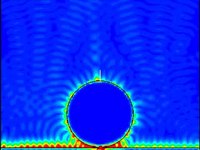
Photo from wikipedia
With the development of global navigation satellite systems (GNSSs), an increasing number of navigation signals are broadcast to provide diversified services for users. In order to save payload resources, multiple… Click to show full abstract
With the development of global navigation satellite systems (GNSSs), an increasing number of navigation signals are broadcast to provide diversified services for users. In order to save payload resources, multiple signals are required to be multiplexed into a composite signal. Furthermore, the composite signal should have a constant-envelope characteristic to mitigate signal distortion caused by nonlinear amplification. Existing constant-envelope multiplexing (CEM) application cases could be roughly divided into two categories, single-frequency CEM and dual-frequency CEM. The research on single-frequency CEM is relatively mature. However, existing dual-frequency CEM techniques still need improving. Although a series of dual-frequency CEM methods have been proposed in the past few years, the theoretical research on this issue still needs to be strengthened. Besides, multiplexing efficiency and flexibility of dual-frequency CEM techniques should also be improved. Therefore, we mainly focus on dual-frequency CEM. We first derive an upper bound of multiplexing efficiency in CEM problem via Chebyshev norm minimization. Subsequently, we prove the upper bound is just the supremum in dual-frequency CEM and propose a new dual-frequency CEM technique, which can achieve optimal multiplexing efficiency. The proposed method also takes the suppression of direct current (DC) component into consideration to avoid the potential hazard caused by the DC component. Utilizing the proposed technique, storage complexity of dual-frequency CEM is also decreased. Simulations and performance analysis are also given, which shows that the proposed technique outperforms existing CEM methods in terms of multiplexing efficiency, flexibility and storage complexity.
Journal Title: GPS Solutions
Year Published: 2019
Link to full text (if available)
Share on Social Media: Sign Up to like & get
recommendations!